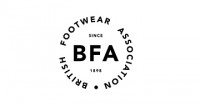How Are Small Shops Valued
Posted on in Cycles News
In this blog shared with us, Paul Dalling, National Valuation Lead at the Valuation Office Agency explains what is involved in valuing small shops.
Small Shops
Small shops are defined as any shop less than 1,850m² (or 20,000 ft²). There are around 500,000 small shops in England and Wales – accounting for £11.5bn worth of rateable value in 2017.
Typically, they are occupied by retailers of fashion, homeware, food and beverage.
Factors to Consider
When approaching the task of valuing a small shop, the actual rent paid on the property is a good starting point, but this doesn’t always tell us the full story. For example:
- The rent may be between people who are related to each other
- The rent may have been agreed a long time ago, or very recently, so may be too distant from the valuation date (which is 1 April 2021 for Revaluation 2023)
- The tenant may have made improvements to the property such as adding air-conditioning or a lift, which may not be reflected in the rent paid
- The rent may also include living accommodation, which we would not include in our valuation of the shop
To help build our picture of the property, we measure small shops to ‘net internal area’ (NIA). The NIA is the useable area inside a building. It excludes things like stairwells; pillars; lift shafts; and staff toilets. Dividing the rent by this area gives a price per square metre, which is useful as it helps us to compare one shop with another.
Zoning
Small shops are very location sensitive, but we would expect those of a similar size and in a similar location to be valued at the same rate per square metre. However, shops are unlikely to be exactly the same size, so we use a method called ‘zoning’ to take these different factors into account.
We divide the shop into 6.1 metre (20 foot) ‘zones’, starting with ‘zone A’ at the window. This is the most valuable part of the shop; it’s where customers are attracted and tempted in. We use ‘zoning’ to arrive at an ‘area in terms of zone A’ for each comparable shop.
‘Zone B’ is in the middle of the shop and is half as valuable as zone A. The deeper into the shop you go, the less valuable the floor space. ‘Zone C’ is half as valuable again as zone B. If the shop goes back any more than zone C (or 18.3m), the rest of the shop floor is called ‘the remainder’, which is half the value of zone C.
The reason we divide shops into zones is that a customer looking in through the window of a shop will see the goods on display at the front with greater ease than goods to the rear of the shop. A customer entering the shop is also more likely to stay near the front of the shop than venture to the rear. Using ‘zoning’ is currently the best way to interpret the approach a retailer takes when considering what rent to pay.
Adjusting and Analysing Rents
Once we have gathered all the evidence, we make adjustments to the rent. We consider the actual rent paid and adjust this to take into account the ‘factors to consider’ discussed above. We then divide this ‘adjusted rent’ by the area of valuable Zone A. This is an analysis of the rent, based on the relevant ‘area in terms of zone A’.
Making an Accurate Valuation
After analysing all the rents available, we can determine a ‘tone of value’ for a group of similarly sized shops in a similar location. This is more than just an average; it gives greater weight to rents agreed closest to the valuation date. We can then apply that ‘tone’ at the valuation stage.
Having valued a particular shop, we may need to make additions or allowances for things not reflected in the ‘tone’ of rents. For example, the tenant may have added air conditioning, or the shop may be on a corner with a sales window on two different streets, which could add value.
Conversely, the approach to the shop may be hampered by a flight of stairs or the shape of the shop might mask part of the sales area. We may decide that such a disadvantage requires an allowance.
The overall goal is to determine a rateable value that reflects an estimate of rent that would be reasonable for a particular small shop in a particular location at the relevant valuation date.
Useful links
If you have any other queries please contact us.





















